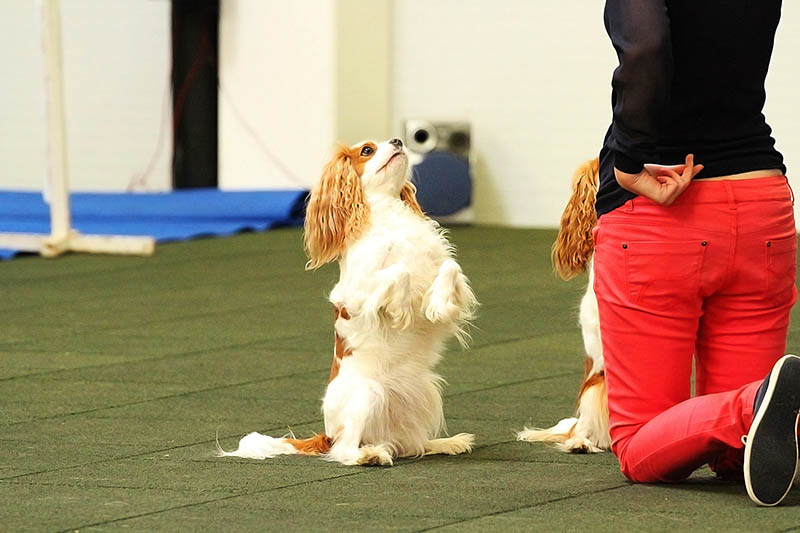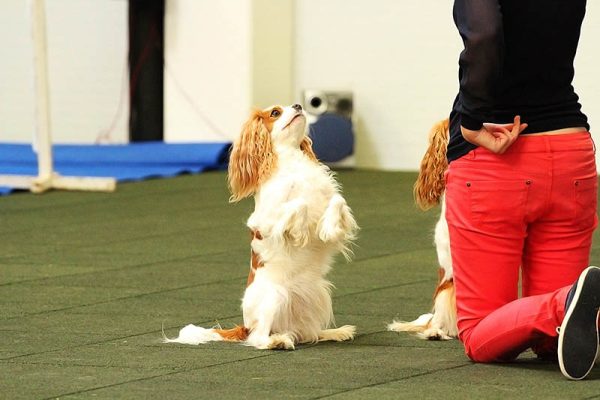Cavalier King Charles Spaniels are sociable dogs that are very popular and a pleasure to own. Affectionate and kind, they are happiest when interacting with their owners. At only 13 to 18 pounds, Cavaliers are considered the largest of the toy breeds. They are small enough to easily jump in your lap, yet they are strong enough to accompany you on long walks and hikes.
Cavalier King Charles Spaniels still retain their instincts to chase and hunt game birds from their larger cousin, the Spaniel. Their fun-loving characters make them suitable for children and families. With their goofy smiles and floppy ears, they are sure to charm the whole household. They have a reputation for being sweet-tempered and placid, which some people mistake for lower intelligence. Nothing could be further from the truth: they are a highly intelligent breed that responds well to the right training.
Training a Cavalier King Charles Spaniel can be a fun experience, so here are some tips to get you started.
The 9 Tips to Train a Cavalier King Charles Spaniel
1. Do Early Socialization
Socialization training for Cavaliers is the process of teaching them to interact appropriately with other dogs and people. This training is important for their overall development and well-being, as it helps them to understand how to behave in different social situations. Well-socialized dogs are more confident and relaxed, which makes them more enjoyable to be around. Socializing should start when your dog is very young.
Ideally, owners or breeders should begin handling puppies while they are still with their mothers. The crucial period for a young dog’s behavioral development starts at 3 weeks and ends at 16 weeks. During this period, King Charles puppies need to have positive experiences and interactions with their littermates, a variety of people, and a range of noises, smells, and sounds. This exposure to mixed and novel experiences at a young age stands them in good stead for coping with strange and varied situations later in life.
Just ensure that you only expose your puppy to safe environments and known healthy dogs because their immunity is still building up, and their scheduled vaccinations are meant to be applied and completed during these same crucial weeks. Avoiding popular public parks and dog parks during this crucial period is highly recommended until the puppy’s vaccination schedule is complete.
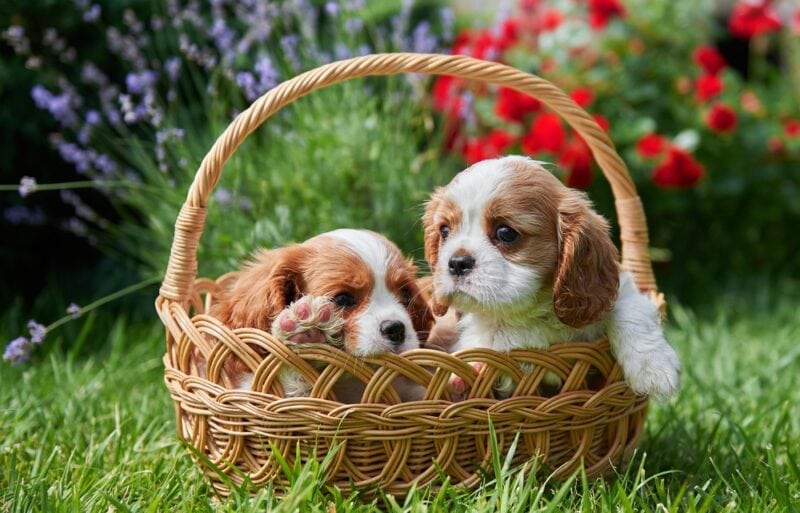
2. Prepare Your Home
Begin by planning for the arrival of your new Cavalier and prepare your home to receive them. When you bring your new forever friend home, make time in your calendar to be at home and bond with your new pup. From the moment your little new friend arrives you want to give them structure with a daily schedule for eating, playing, housetraining, and sleeping.
Although you may want to show off your King Charles puppy to your friends and neighbors as soon as possible, hold off for a few days to allow your pup time to familiarize themselves with and adjust to the sounds, smells, and sights of their new environment.
3. Set Training Goals
Have you considered what things you want your dog to learn and the best times for them to learn them? The basic training goals that you should set are housetraining, sleeping at night, walking on a leash, and not chewing anything and everything that they can reach. After that, your aims can be more nuanced but should still include reinforcing useful behaviors like recall, attention, and sit. Reinforcing desirable behaviors and ignoring unwanted ones helps discourage the latter from becoming habitual. Offer a teething puppy a few chew toys to redirect their discomfort, and discourage biting. Similar things can be done for unwanted behaviors like begging for food or barking and jumping up at visitors.

4. Use Positive Reinforcement, Not Punishment
King Charles Spaniel puppies, like most dogs, cannot decode complex human communication. So, the simpler you keep your message the more likely your dog is to understand you. It is more effective to encourage your Cavalier towards the behaviors you want than to punish it away from the behaviors you don’t.
This type of training—where you reward your pet for their good deeds—is called positive reinforcement. For positive reinforcement to work, you have to administer it during or immediately after your four-pawed student performs the action you want to encourage, and your reinforcement has to be communicated in a way that your dog can comprehend. What matters most is the tone of your voice and your body language. The most direct reinforcement a dog understands is food. So, try using small treats to reward your dog as you train them.
An alternative you can use alongside treats is physical touch. Rewarding a dog with some affectionate petting will hit the reward centers in their brain and help them to learn the link between the action you want and the reward they like.
5. Train in Small Chunks and Do It Often
Little and often is the key to effective training sessions with your Cavalier. If you can keep each session to 5 minutes or less you will keep your dog at a high level of attentiveness. This is the state in which they are most capable of learning. By limiting the length of each training session, you will not end up giving your puppy so many treats that they become a meal and ruin their appetite!
When a dog learns, their comprehension can be highly situation specific. Just because your furry friend has learned to sit on command in the garden this morning, that doesn’t necessarily mean that in the afternoon, they will repeat the same behavior in the kitchen. By breaking the training into small chunks, you can repeat the same short lesson under different conditions and in different scenarios.

6. Do Progressive Training
Your dog is more likely to learn a complex skill or behavior if you can break it down into its component parts and then teach each step in a sequence. This is especially true if you are trying to modify your Cavalier’s behavior to get rid of unwanted habits. So, if you want to train your dog to “come” start by praising and rewarding your dog when they take even one step toward you. Your pup will soon get the hang of it.
7. Have Fun
We all learn best when we are enjoying ourselves, so try and make the training fun. With such a charming companion to work with, it shouldn’t be difficult. Don’t get caught up focusing on the end goal of the training—the behavior that you want to create or change. Instead, stay focused on the process and incorporate plenty of play and fun into your training sessions. Keep the atmosphere light and positive. If you or your King Charles are flagging, call a halt, clear your mind, give them space, and come back to your task after a break.
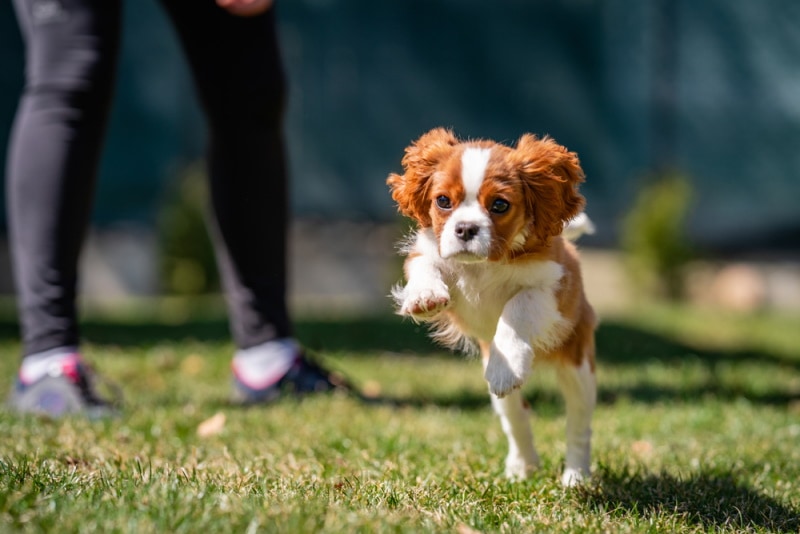
8. Consult a Dog Trainer
If you feel you aren’t making progress or you are struggling to teach your Cavalier King Charles how to behave, you should consider consulting a professional dog trainer or taking classes to get expert help and personalized feedback on how to train your dog. Whatever problem you are experiencing, a trainer is likely to notice the fine details that you cannot see and know how to help you.
When looking for a trainer or a class, try to find one with a good reputation and positive reviews. It’s important for you and your furry companion that you have a good experience.
9. Potty Train a Cavalier King Charles Spaniel
To potty train a King Charles Spaniel, like any dog, it is best to start when they are a puppy. The key to potty training your King Charles is to establish a routine so they know when they should eat, sleep, or pee. To establish how often you should plan for your puppy to pee, you have to know how long a puppy can contain their bladder. In general, before 2 months old, a puppy probably can only hold their pee for about an hour, but by 2 months, they should be able to go 2–3 hours between bathroom breaks.
Assuming you want your King Charles to do their business outside, you should take them out every 2 hours and then immediately after they do their business, reward them with a treat. After that, take them for a short walk. Set a routine with regular times, but gradually extend the times between potty breaks. Keep in mind that when your King Charles puppy eats, they usually need to go out within 15 minutes. Add in regular morning and evening walks. Before long, your Cavalier puppy will learn your routine and know what is expected of them.
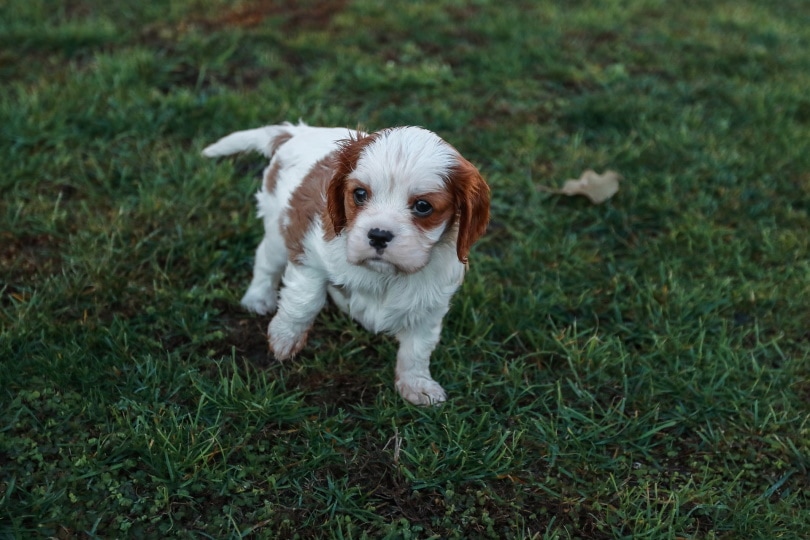
Conclusion
Cavalier King Charles Spaniels are intelligent, good-natured dogs that take well to training and respond to positive reinforcement techniques. Desensitization and good socialization are the foundational skills to prepare your puppy for learning the core behaviors of a well-behaved and well-trained dog. Before you start training, you should know the behaviors and skills you want to teach. Make a step-by-step plan to achieve each goal and reinforce each milestone. Your young Cavalier learns best when their training is fun, bite sized, and repeated often.
If you need help with training your pooch, you can always engage a professional trainer or take a class. It’s worth the time, effort, and patience involved because a well-trained Cavalier is a wonderful companion that will bring you a lifetime of joy.
Featured Image Credit: Best dog photo, Shutterstock
Contents
- The 9 Tips to Train a Cavalier King Charles Spaniel
- 1. Do Early Socialization
- 2. Prepare Your Home
- 3. Set Training Goals
- 4. Use Positive Reinforcement, Not Punishment
- 5. Train in Small Chunks and Do It Often
- 6. Do Progressive Training
- 7. Have Fun
- 8. Consult a Dog Trainer
- 9. Potty Train a Cavalier King Charles Spaniel
- Conclusion

